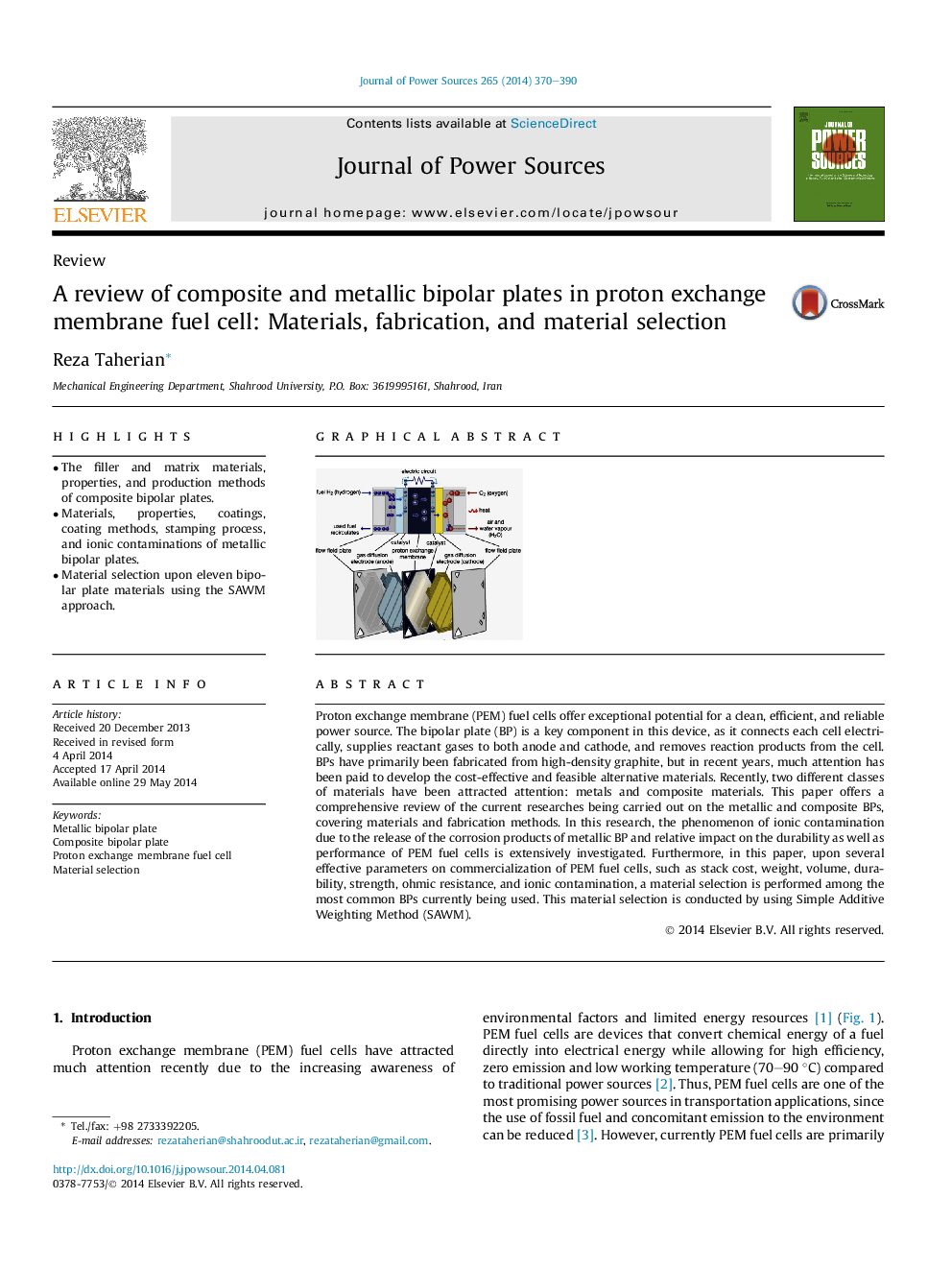| Article ID | Journal | Published Year | Pages | File Type |
|---|---|---|---|---|
| 1284028 | Journal of Power Sources | 2014 | 21 Pages |
•The filler and matrix materials, properties, and production methods of composite bipolar plates.•Materials, properties, coatings, coating methods, stamping process, and ionic contaminations of metallic bipolar plates.•Material selection upon eleven bipolar plate materials using the SAWM approach.
Proton exchange membrane (PEM) fuel cells offer exceptional potential for a clean, efficient, and reliable power source. The bipolar plate (BP) is a key component in this device, as it connects each cell electrically, supplies reactant gases to both anode and cathode, and removes reaction products from the cell. BPs have primarily been fabricated from high-density graphite, but in recent years, much attention has been paid to develop the cost-effective and feasible alternative materials. Recently, two different classes of materials have been attracted attention: metals and composite materials. This paper offers a comprehensive review of the current researches being carried out on the metallic and composite BPs, covering materials and fabrication methods. In this research, the phenomenon of ionic contamination due to the release of the corrosion products of metallic BP and relative impact on the durability as well as performance of PEM fuel cells is extensively investigated. Furthermore, in this paper, upon several effective parameters on commercialization of PEM fuel cells, such as stack cost, weight, volume, durability, strength, ohmic resistance, and ionic contamination, a material selection is performed among the most common BPs currently being used. This material selection is conducted by using Simple Additive Weighting Method (SAWM).
Graphical abstractFigure optionsDownload full-size imageDownload as PowerPoint slide
